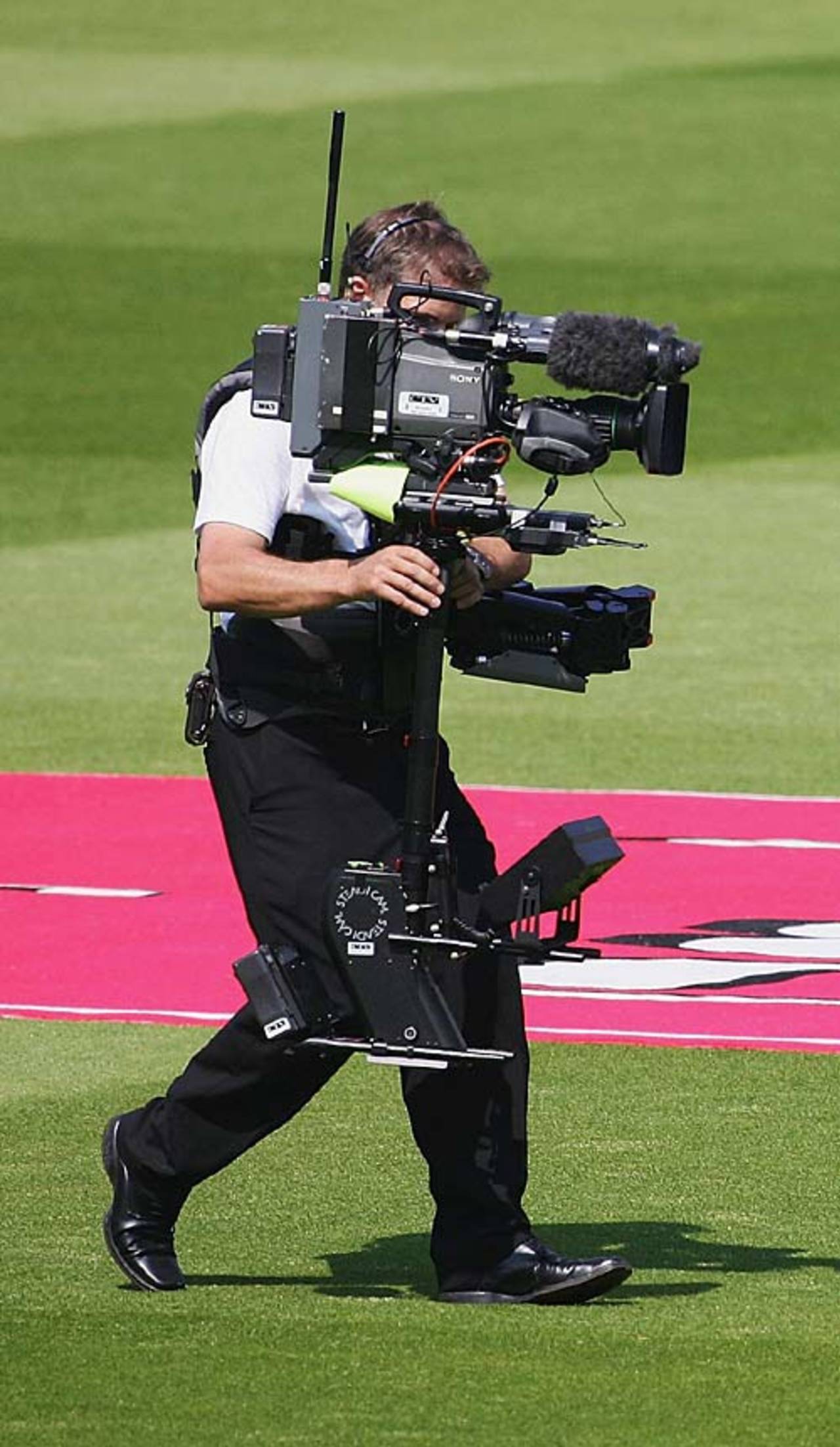Is cricket slow on the internet uptake?
Fans have been at the forefront of using new media to expand their understanding and enjoyment of the game. It's time clubs and traditional media caught on
Dave Hawksworth
02-May-2013

Cricket's relationship with television coverage has matured, but the one with the internet is still finding its feet • Getty Images
Cricket and what is sometimes termed "old media" have a pretty good relationship. Newspapers have provided coverage since the beginnings of the professional era, reporting on events, and sometimes, as with the fake obituary that gave birth to the Ashes, being central to them. The game's languid grace and technical intricacies lend themselves to thoughtful prose, and newspaper journalists have, traditionally, provided intelligent copy that comes from a love of cricket's glorious complexity.
Television too is a good match, with the technology used for its coverage having improved rapidly over the last decade or so. Occasionally it can go a little too far - I could personally do without a cartoon duck accompanying batsmen back to the pavilion, and you sometimes worry that those controlling the broadcast rights to the IPL are only a season or two away from allowing umpires to be replaced by a CGI Jar Jar Binks hologram. But with the coverage of international matches, we seem to be in a golden age of innovation where technology is used to inform rather than distract.
That relationship between cricket and the traditional print and broadcast media has matured over decades, so that everyone involved understands the importance of working together to connect the game with its supporters.
When it comes to new media, the internet, I'm not so sure cricket has figured out how the relationship should work. That's largely due to just how recent a development it is in our lives. I've worked in the IT industry for most of my adult life yet only had an email account for the last 15 years. So compared to the longevity of newspapers like the Times, or the cultural dominance television has held over the past half-century, the Internet really is the new kid on the block.
But it's a newcomer with an immense capacity to improve the experience of following sport, with its ability to deliver information instantaneously and provide a platform for discussion. Yet so far, much of cricket's innovation and experimentation with the internet has been undertaken by supporters creating and disseminating information amongst themselves. It's the fans who have been the early adopters.
It was supporters who set up the first cricket discussion boards, with clubs slow to follow - for example, Yorkshire's White Rose forum was an independent site for over ten years before the club thought to include it as part of their official site.
Similarly there has been an explosion in cricket writing coming from hundreds, possibly thousands, of blogs, covering subjects the mainstream media has no interest in or lacks the time and space to tackle. And what began as initial tentative steps into amateur writing has become steadily more ambitious as supporters have branched out into player interviews, podcasts and live match commentary.
That innovation has now been adopted by more established media outlets, with newspapers interacting with supporters via live blogs and television using social media to involve viewers. And it's perhaps understandable that ESPNcricinfo, which itself started as a collaborative internet experiment, is now expanding the way information can be presented to supporters with the use of podcasts and Google+ Hangout video chats.
The cricket establishment itself has been much slower to react. Individual clubs and boards of control have long had websites but the quality and immediacy of the information they offer can vary greatly.
That's why it was so encouraging to see video footage of wickets from last week's county championship game at The Oval being made available within minutes of it being taken. That might seem relatively insignificant at first glance but it is hopefully a sign that cricket is further unlocking the potential of the Internet to take the game to supporters.
I'm not saying that all first-class matches can be streamed live, as full coverage is incredibly expensive and there are broadcast right issues at play. But footage can be taken of each game. You don't need the cinematography of a John Ford western or a Bollywood song-and-dance number to introduce bowling analysis, just a single static camera that captures the ball being bowled and the shot being played. Surrey has shown that wickets can be edited out of that footage using software that costs just a few hundred pounds and the resultant clip quickly made available. If they can do it, so can others.
Low-cost broadband now makes the timely delivery of match highlights to supporters' computers and mobile phones a possibility. If clubs can add regular podcasts and video interviews with their most prized assets, the players, they have a way to engage the armchair fan, as well as a possibly valuable new income stream.
Cricket is a sport that makes great time demands of its supporters. Add travelling and attending even a game of T20 is a huge commitment. But in the internet, cricket has found the perfect tool to take the game to supporters. Instead of watching while those supporters use the internet to innovate, it's time that cricket itself started to take the lead.
Dave Hawksworth has never sat in a press box or charged a match programme to expenses